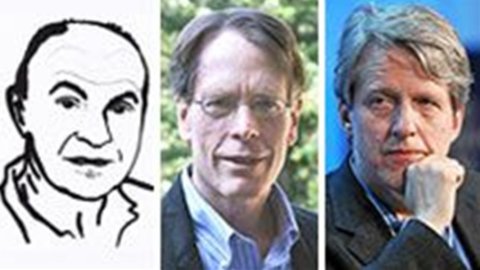A rather confused message emerges from the Nobel prizes for economics announced yesterday. In fact, it had never happened that, even in the presence of sharing the prize between two or more recipients, the conclusions of one's research were in such stark contrast with those of another recipient in the same brood.
It should be remembered that the Nobel Prizes were established in 1895 as a bequest from Swedish industrialist Alfred Nobel, the dynamite magnate. However, unlike those in physics, chemistry, medicine, literature and peace, which start immediately, the Nobel prize for economics was established only in 1969, on the initiative of Sveriges Riksbank (the Swedish Central Bank). Unlike the absence of the Nobel prize for mathematics – which is said to have depended on the conflict between Nobel and a mathematician in love affairs over a common cupid – the long absence of the prize for economics seems to have descended from the fact that economics had for Nobel dignity inferior to that of other sciences.
But, returning to today's events, the Nobel Prize winners for economics were Eugene F. Fama (University of Chicago), Lars Peter Hansen (University of Chicago) and Robert J. Shiller (Yale University). The motivation that unites them is to receive the prize “for their empirical analysis of asset prices”. Well, on the one hand Hansen is one of the leading experts in the econometric study of time series - that is, through sophisticated statistical analyzes he has proposed new methodologies for interpreting the trend of economic and financial variables over time - and therefore appears more like a methodologist than an economist, so that his figure does not lend itself to belonging to schools of thought. On the other hand, however, Fama and Shiller are on decidedly opposite sides in terms of the theories they have proposed to interpret the functioning of financial markets.
For Fama, a student of Nobel laureate Merton Miller at the University of Chicago, the Scientific Committee of Sveriges Riksbank cites two fundamental articles in which the author supports and corroborates the theory of efficient markets, according to which financial markets determine efficient prices and behave rationally. In fact, the efficient markets hypothesis has been very influential and has shaped entire generations of economists. A great deal of studies have been devoted to verifying the reliability of this hypothesis. And the substantial outweighing of confirmations over disproofs of this theory has played a crucial role in providing a strong foundation for financial liberalization.
For Shiller, a student of the Nobel laureate Franco Modigliani at MIT in Boston, the famous book "Irrational exuberance", published in 2000, is instead cited, in which the author argued that financial markets are often irrational, ending up falling prey to bubbles speculative. With great timing, Shiller then predicted the unsustainability of the dot.com bubble (of listed shares in the internet segment) and, in fact, within a few months the bubble would burst, causing deaths and injuries and inducing, in the opinion of many observers, Alan Greenspan to undertake the deep and prolonged action of lowering American interest rates which would later be one of the main causes of the formation of another, much more serious, bubble in the US real estate market, from which came the 2007 crisis- 09. It should also be remembered that Shiller had already predicted the bursting of the US real estate bubble in 2005.
In short, if for Fama the financial markets are rational, for Shiller they are not or, at least, they are not for prolonged periods of time. The implications are obviously divergent: for Fama the markets must be left to themselves; for Shiller it may be desirable to intervene so that the markets do not lose their bearings.
Looking at the last ten years, it had already happened that, from one year to the next, the Nobel prize passed from liberal hands to interventionist hands: for example, at the cost of some schematism, after the 2004 award of Kydland and Prescott, champions of the macroeconomic liberalism, in 2005 Aumann and Schelling were awarded, scholars of game theory which does not always lend itself to liberalism; after the succession of Nobel prizes to Krugman (2008), an eminently interventionist/Keynesian economist, those to Ostrom and Williamson (2009), for their contributions on situations of market failure, and those to Diamond, Mortensen and Pissarides (2010 ), for their analyzes of market dysfunctions in the presence of frictions, the time had come for Sargent and Sims (2011), again academics in the tradition of macroeconomic liberalism. This swing reflects not only the balance in the Scientific Committee of Sveriges Riksbank but also the need to protect a certain biodiversity of economic thought.
Instead, it had never been seen that on the same occasion representatives at the antipodes of each other were awarded, as happens now with Fama and Shiller. Faced with this escalation of schizophrenia between opposing currents, we will certainly get over it. The event, however, highlights how economic thought can appear somewhat controversial. One wonders if, all in all, Alfred Nobel really had some reason to exclude from the original list of his prize economics, a science so inaccurate compared to those he selected.





